Boutique chic: Taking luxury to the next level with bedroom bathing
Wed 3rd Nov 2021 by Lisa Hibberd
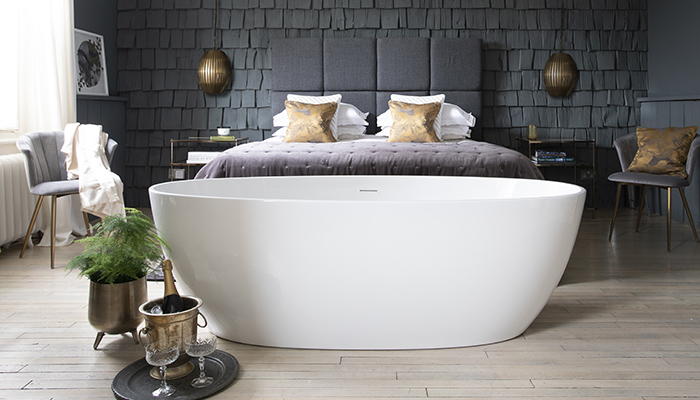
Boutique chic: Taking luxury to the next level with bedroom bathing
Thought of by many as the preserve of boutique hotels, a bath installed in a bedroom conjures up notions of luxe weekends away, but now consumers are increasingly wanting to bring the idea home. Lisa Hibberd takes a look at the rising popularity – and the practicalities – of installing a bath in the bedroom.
There’s little doubt that there’s something truly indulgent about having a bath tub in the bedroom. Stepping straight out of a warm bath and heading to bed is surely the height of luxury, but inspired homeowners are looking to recreate that vibe on a permanent basis.
“Thanks to social media and stunning photography of hotels featuring a bathtub within the suite, there has been a concerted shift towards the bathroom being designed as a holistic living space,” explains Emma Joyce, brand manager at House of Rohl. “This aesthetic is aspirational to consumers; showcasing beautiful freestanding bathtubs within a room or suite can give the room a real sense of luxury. The cosiness of the bedroom makes it a place of relaxation and comfort, so placing a bath there only further enhances this.”
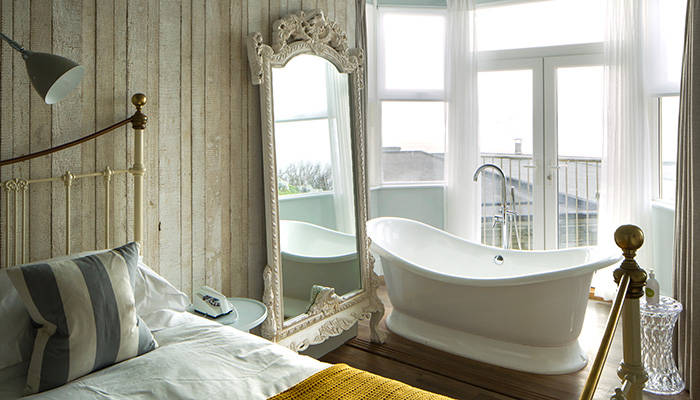
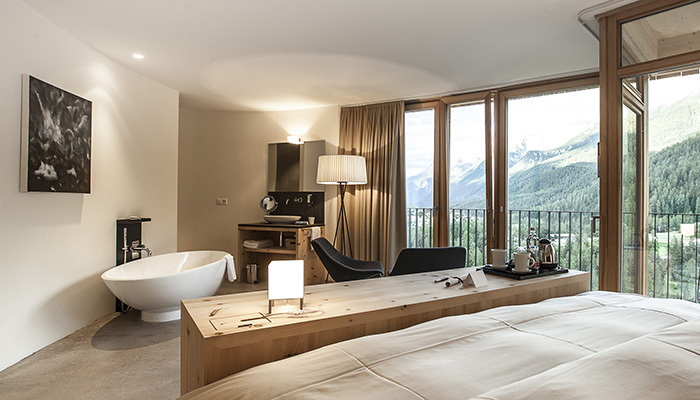
Although it’s unlikely that the traditional family bathroom or en suite is to be replaced any time soon, due to the need to bathe children, for example, or times when people wish to take a bath behind closed doors, the seriously grown-up concept of bedrooms with baths is rising in popularity.
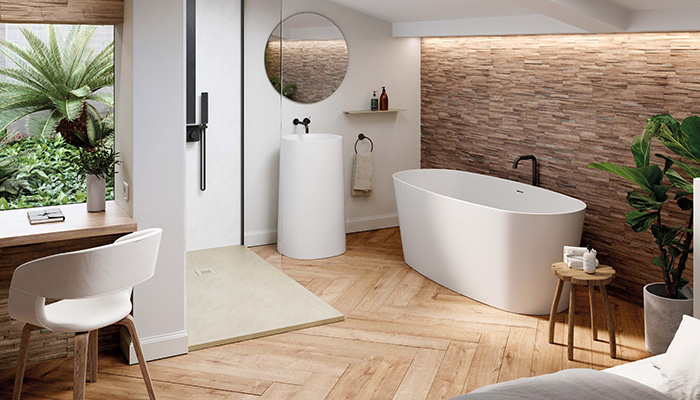
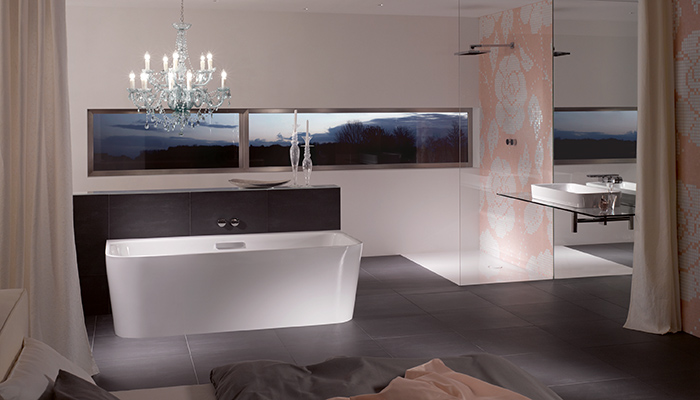
“One factor that is essential to making this trend work is space,” says Sally Cutchie, marketing manager at BC Designs. “A bath in the bedroom is definitely not an option for space-limited living – it works best as a feature taking centre stage in an already impressive room. The star of the show – the bath – also needs careful consideration, as it will be hard to create the look with a low to mid-market product. If you’re going to have a bathtub at the end of the bed, it’s got to be a feature, it needs to have presence and make a statement.” Another contributing factor is that bathrooms are getting smaller – those who may not have the space for the bath of their dreams may find that it’s a possibility in the bedroom instead.
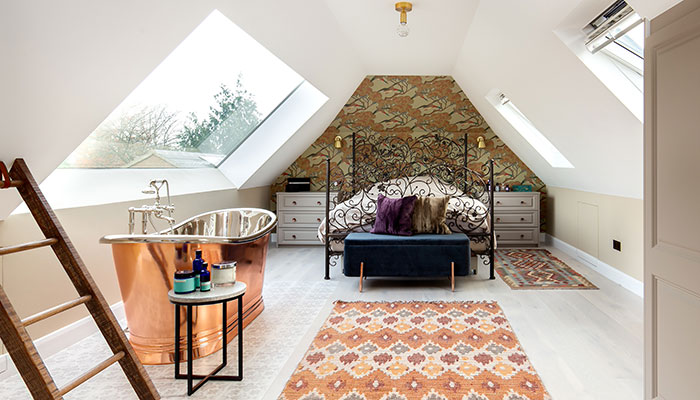

Many consumers can be put off the romantic idea of bedtime bathing by the prospect of plumbing. “Customers may be hesitant at first, thinking that the plumbing may be too complicated,” says Bart Sobieszczanski, senior designer at Ideal Standard. “As long as there’s a bathroom on the same floor, the plumbing tends to be relatively straightforward and can be simply carried out by professionally trained installer. However, floors and walls will need to be opened up to allow for this new pipework, meaning there can be quite a bit of disruption during installation, so homeowners need to be prepared for the extent of the work before the installation starts.”
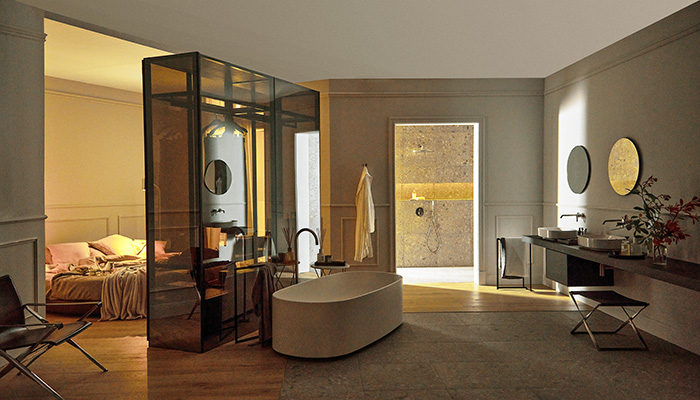
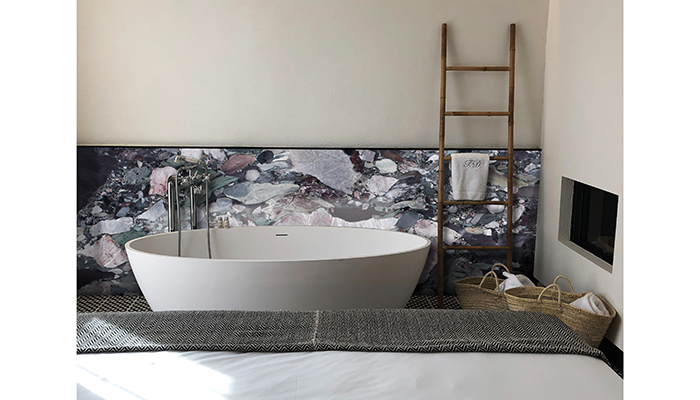
With many showstopping baths being made from materials such as metal or stone, are clients right to have have other worries concerning installation? Lee Frost, director of Waters Baths of Ashbourne, comments, “Consider the weight of the bath, and always bear in mind that when full of water it will be even heavier. Consumers do have the option of a lightweight material such as acrylic, but a heavy weight copper, cast-iron or natural stone bath might mean that the floor has to be strengthened.”
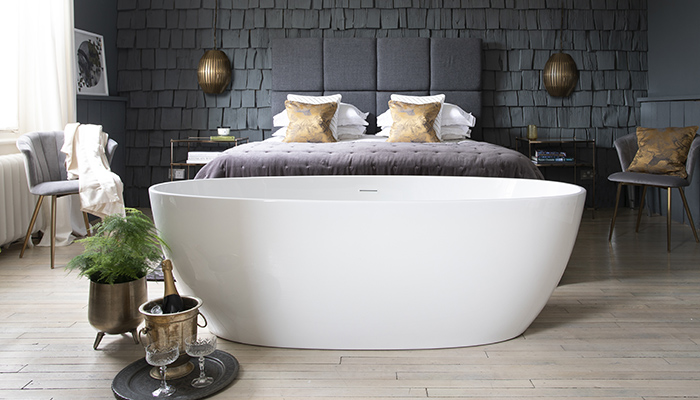
Ben Bryden, sales and marketing director of RAK Ceramics, recommends that, aside from the most obvious considerations such as plumbing, designers shouldn’t forget other practical aspects. “Think about things like flooring – carpet is not really the best option for the area around the bath, for example. The ventilation in the room also needs to be good, with plenty of access to natural air to avoid steaming hot baths ruining soft furnishings – even more important in a bedroom.” Freestanding baths are ideal for making a bold statement in a bedroom or broken plan space, but most lack the handy shelf space which comes with a built-in design, so a stylish side table or bath bridge is a useful addition on which to stand bathing essentials.
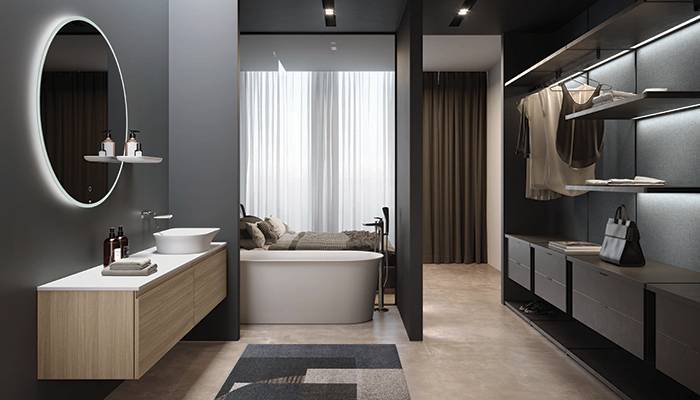
Tags: features, bathrooms, baths in bedrooms, freestanding baths, ideal standard, waters baths of ashbourne, rak ceramics, albion bath company, bc designs, bette, acquabella, v&a baths, v+a baths
Sign up to our newsletter
Most Read
Crown Imperial – 5 ‘must have’ kitchen trends for 2026
Sun 21st Dec 2025


























